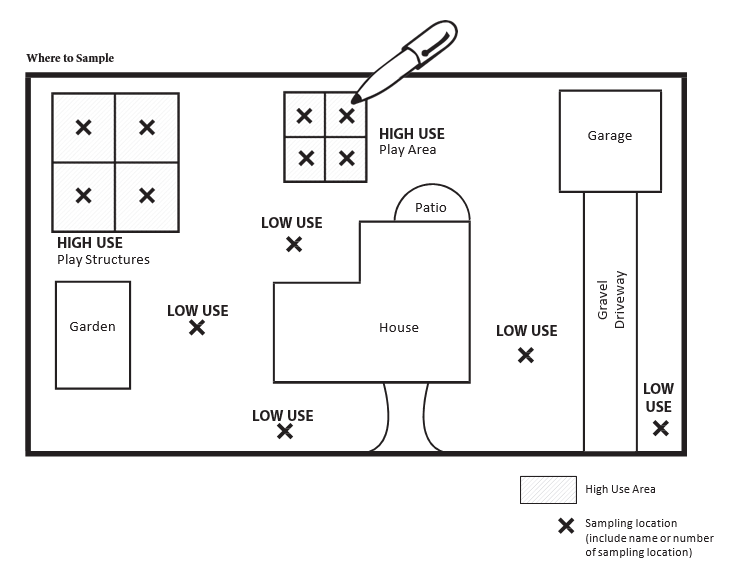How to sample your soil
Ecology or the Environmental Protection Agency (EPA) may have already sampled your soil for arsenic and lead. You might also qualify for free soil sampling. If not, we provide instructions on how to sample your property's soil for arsenic and lead.
I want to...
If you live in King, Pierce, Thurston, or Snohomish counties you might qualify for free soil sampling, or your soil may have already been sampled through our Everett or Tacoma Smelter Plume programs. Search our interactive map to find out.
If you live in Stevens County, the EPA may have sampled your soil during past cleanup actions. Contact Cass Galasso, EPA project manager, to see whether your property has been sampled. You may also visit our upper Columbia River Lake Roosevelt site for more information.
If you live in Chelan, Douglas, Okanogan, Spokane, or Yakima counties, contact Rhonda Luke for more information. You may qualify for free soil sampling if you live on former orchard lands.
If you are not eligible for soil sampling, or want to sample your own soil
Soil sampling is not difficult, and the tools you need can be found around the home. Depending on the number of samples, an average residential property should cost $90–$300 (prices checked in 2025).
This is a brief summary. For more detailed information, please download our Soil Sampling Guidance.
Steps to sample your own soil for arsenic and lead
- Pick a lab — Search to find a certified lab — Select by Analyte: Arsenic.
- Plan — Use our guide to decide how many samples you need and where to take them.
- Collect — Take soil samples and don’t forget to always follow healthy actions.
- Analyze — Send or take your soil samples to the lab.
- Compare — See if your arsenic and lead levels could cause health risks. Follow our healthy actions to prevent health risks.
It’s easy to collect soil for sampling. This quick video will show you how. Grab your gloves, a plastic bag and a small shovel, and you’re all set!
Contact information
Sarah Miller
Tacoma Smelter Plume Outreach Coordinator
Sarah.Miller@ecy.wa.gov
360-999-3186
Erika Beresovoy
Upper Columbia River/Lake Roosevelt Public Involvement Coordinator
Erika.Beresovoy@ecy.wa.gov
509-385-2290
Sandra Matthews
Everett Smelter Project Manager
Sandra.Matthews@ecy.wa.gov
425-223-1999
Rhonda Luke
Former Orchards Project Coordinator
FormerOrchards@ecy.wa.gov
509-406-6931


